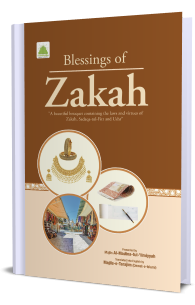
Women’s Corner
Can zakat be given to one’s stepmother?
Q: What do the scholars of Islam say about the following matter: is it permissible to give zakat to one’s stepmother if she is considered needy (faqīr) according to Islamic dictates, and she is not from the Prophet’s family or from Banū Hāshim?
بِسْمِ اللّٰہِ الرَّحْمٰنِ الرَّحِیْمِ
اَلْجَوَابُ بِعَوْنِ الْمَلِکِ الْوَھَّابِ اَللّٰھُمَّ ھِدَایَۃَ الْحَقِّ وَالصَّوَابِ
A: It is permissible to give zakat to the stepmother who is not from the Prophet’s family or Banū Hāshim, and who is deemed needy in Islamic law. It should be noted that a needy person according to Islamic law is someone who does not possess wealth that reaches the required threshold (niṣāb), or someone that possesses niṣāb but requires it for her necessities of life, or she is in so much debt that once she repays it, she will no longer possess niṣāb.
وَاللہُ اَعْلَمُ عَزَّوَجَلَّ وَ رَسُوْلُہٗ اَعْلَم صلَّی اللہ علیہ واٰلہٖ وسلَّم
Answered by: Mufti Fuzayl Raza Attari
Using dye that appears black while in the sitting period (ʿidda)
Q: What do the scholars of Islam say about the following matter: can a woman who is observing the sitting period following her husband’s death use dark brown dye that appears black?
بِسْمِ اللّٰہِ الرَّحْمٰنِ الرَّحِیْمِ
اَلْجَوَابُ بِعَوْنِ الْمَلِکِ الْوَھَّابِ اَللّٰھُمَّ ھِدَایَۃَ الْحَقِّ وَالصَّوَابِ
A: Black dye is impermissible and haram to use except during jihad, and not all shades of black are equal in their blackness. Some of them are more intense than others, such that there is no possibility of it being confused with another colour. However, some shades of black appear to have other colours within them. For example, if many true indigo leaves are added to henna and then used to dye hair. Said hair will appear black, but this blackness appears to be slightly blue. This is still considered black however and applying such will still be haram.
So, a dark brown colour which appears to be black when applying it to the hair, will also fall under the ruling of being black. This remains impermissible and haram to apply and will not become permissible simply by being named brown. Additionally, the question is in relation to utilising such during the sitting period; this is even more objectionable, as it is impermissible and prohibited for a woman to adorn herself during a sitting period following the death of her husband or an irrevocable divorce (bāʾin wa mughallaẓah).
Dye is also a form of adornment, so even if it is any other colour besides black, it is still impermissible and forbidden during the sitting period. As such, the use of black dye is even more unacceptable and prohibited. One should avoid using black dye whether observing the sitting period or not.
It should be noted that due to the sitting period, any colours besides black have also been prohibited here. However, it is permissible for men to utilise any colour of dye besides black in all cases, and the same applies for women not observing the sitting period. These fall under two types of colours; some are those which appear totally black, and there are others which have some inclination towards black. Just as the jurists state that adding katam leaves to henna will cause the redness to become intense, and it is a rule with the colour red that it inclines towards black when it is dark.
In this case, this inclination towards black is disregarded, and using it is permissible. In fact, adding katam leaves to henna which causes it to become dark red, and then utilising it, is better than using henna alone. The best type of dye to use is yellow, which has been encouraged in hadith.
وَاللہُ اَعْلَمُ عَزَّوَجَلَّ وَ رَسُوْلُہٗ اَعْلَم صلَّی اللہ علیہ واٰلہٖ وسلَّم
Written by: Abu Muhammad Muhammad Sarfaraz Akhtar Attari
Verified by: Mufti Fuzayl Raza Attari


















Comments